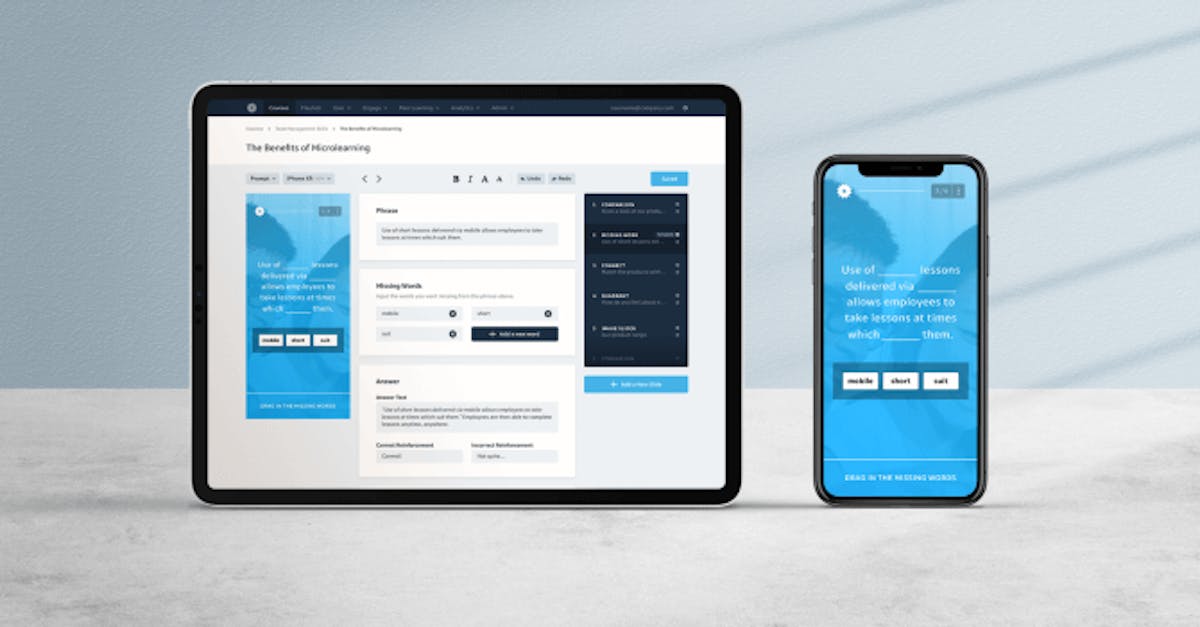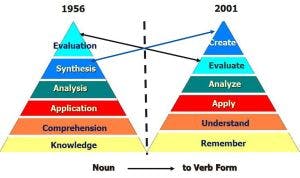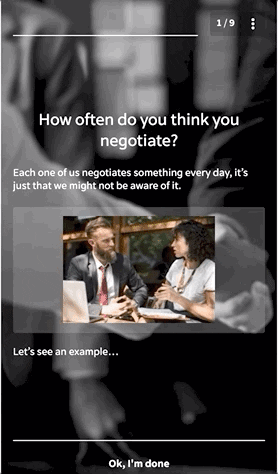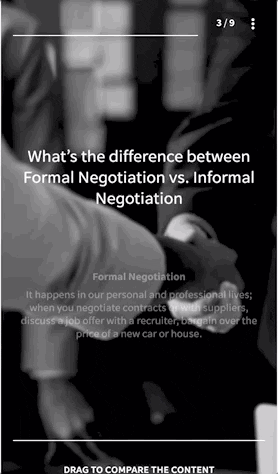Bloom’s taxonomy of learning

Bloom’s Taxonomy of Learning
Imagine you want to be a chef. One day you start out making yourself some boiled eggs. A week later, you are making scrambled eggs. Next, comes omelettes followed by eggs Benedict. This simple process of progression can be likened to how Benjamin Bloom illustrated learning through Bloom’s Taxonomy of Learning. What is Bloom’s Taxonomy?
Bloom’s Taxonomy of Learning was introduced by Benjamin Bloom in the mid-1950s. This hierarchical system presents educators with the goal of challenging learners to develop higher-order thinking skills as used by many LMS. Rather than simple knowing something and remaining at the lower-level cognitive skills, Bloom asserted that true learning occurs when students are able to transition through the different levels with the acquired knowledge. In looking at the chef example, no chef remains at the most basic food items if he or she wants to succeed in the kitchen. Bloom asserted that actual learning occurs when content is used to obtain different learning outcomes.
Bloom Taxonomy Diagram
The diagram shown below presents two different versions of Bloom’s Taxonomy. A quick glance will show minimal differences between the original version on the right and the newly modified version on the right. How do they differ? The one on the left shows six levels presented as nouns; recently Bloom’s learning taxonomy was updated to include six levels that are now verbs. These verbs represent how learners are working with knowledge through the acts of remembering, understanding, applying, analyzing, evaluating, and creating. A close comparison will also show that the original top-tier was evaluation, but that has been slightly down to the fifth level in the updated version; there is now a place for creating at the top level of the Revised Bloom’s Taxonomy.

When teachers, business executives, or professional development companies go to present students, employees, and general members of society with new information, the use of Bloom’s Taxonomy is strongly encouraged. For example, EdApp’s use of microlearning is a perfect example of how this LMS is applying Bloom’s taxonomy verbs. Through the use of bite-sized chunks of information, learners are more able to acquire knowledge and thereby are actively remembering what they are presented with. Completion rates of LMS programs using these types of Bloom’s taxonomy questions is generally higher because of how EdApp and others is using this lower tier to begin the learning process.
Bloom’s Taxonomy examples
Bloom’s Taxonomy examples are further evidenced in LMS by how learners are able to practice their understanding of the content. For example, EdApp provides learners with mobile access to the content. Their understanding of the content is evident in how they respond to questions they receive directly on their smartphone as shown in the image below.

Further interaction with content to ensure mastery requires applying and analyzing the material. EdApp has uniquely blended something called gamification into their LMS platform to do just that. Through unique interaction and blended learning, those persons completing LMS courses that include gamification through EdApp are generating a variety of domain relevant activity as it relates to Bloom’s Taxonomy Wheel. These experiences lead to enhanced message retention.
Bloom’s Taxonomy & EdApp
Simply stated, EdApp has a variety of ready-made templates that are completely content neutral. What does that mean? It means that you can upload your images, text, videos, and accompanying narration in a way that aids your learners in progressing through content using Bloom’s Taxonomy of educational objectives.
Still not sure how to provide content to learners in a way that makes Bloom’s Taxonomy Chart come to life? Let’s take a look at this course from EdApp. In this course on ‘Negotiation’, users begin by remembering what negotiation is.
Now, learners move further into the process of understanding how negotiation is important. From there, learners move on to applying what they know about negotiation in realistic scenarios.

Next, the task of analyzing the content in relation to negotiation takes center stage.

Now, learners are ready to complete the process of evaluating negotiation skills.

Finally, learners are creating their own negotiation plan.
In reality, Bloom’s Taxonomy is not just a learning application – it is a way of life application. From learning to cook something great by going from simple to complex or mastering workplace knowledge, EdApp has designed its LMS space to promote successful learning through well spaced repetition and interaction with the content.
Author
